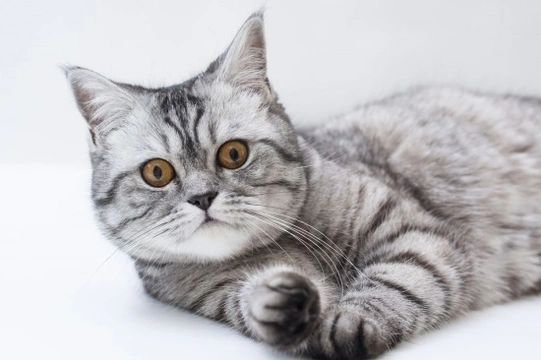
Hair loss in cats - Feline alopecia
Cats naturally shed some of their fur on an ongoing basis, as part of the normal cellular renewal process and to ensure that their coat is appropriate for the changing seasons. This is perfectly normal and no cause for concern. However, excessive shedding, hair loss leading to bald patches and fur that falls out in clumps as part of grooming or brushing is not normal, and may indicate the presence of an underlying problem. Are you concerned about the amount of fur that your cat is shedding, or if they are starting to develop bald patches or areas of thinner hair? Read on to learn more about hair loss in cats.
Identifying feline alopecia
Alopecia is the term used to refer to the loss of the hair or fur in an animal (or person) and can occur due to a variety of different reasons. Cats will generally moult more in the spring and autumn as their coat changes to suit the seasons, and of course, longhaired cats will appear to lose more fur than shorthaired cats! If you feel that the amount of hair that your cat is shedding is excessive, sometimes, simply supplemental grooming can help. While cats are usually fastidious about their own grooming rituals, many cats require an extra helping hand, and brushing your cat’s coat can help to remove any loose fur, stimulate healthy hair growth, and generally help to keep them in good condition, as well as giving you the opportunity to check on the condition of their coat and skin.
If you notice that your cat’s fur is actually bald in places, is particularly thin, is accompanied by excessive dandruff, or appears to be causing irritation or soreness, your cat may have a problem that you will need to address.
The common causes of hair loss in cats
There are literally hundreds of different reasons behind why your cat might potentially be losing their fur, and your vet may decide to take skin scrapings or samples for microscopic evaluation to help to narrow down the root cause.
Some of the most commonly diagnosed reasons for hair loss in cats include:
Flea infestation
A severe flea infestation can easily lead to hair loss in cats, as the saliva in the flea bites are irritants than can cause inflammation of the skin and subsequent hair loss. Check that your cat (and your home) is not rife with fleas as your first course of action.
Skin allergies
As well as the allergic reaction that can be caused by fleabites, many other things can cause skin sensitivities and allergies in the cat as well. These can range from additives and allergens within the food that you feed your cat, to environmental allergens such as household cleaning products, and even types of pollen and grasses. Identifying the actual cause of an allergen can be a challenge, and if you cannot rule out the cause of the allergy yourself, your vet may wish to run some allergy screening tests to identify any particular sensitivity.
Thyroid disease
Hyperthyroidism (an overactive thyroid gland) and other problems with the thyroid gland can lead to hair loss in the cat as a side effect, which will require blood tests to determine. Hyperthyroidism can be managed by means of veterinarian prescribed medications, and once your cat’s thyroid hormone levels have been brought under control, thyroid-related hair loss will usually correct itself.
Ringworm or dermatophytosis
Ringworm is a fungal skin condition that leads to circular patches of hair taking on a proud and raised appearance, and ultimately falling out. Ringworm is usually fairly easy to identify, and can be treated with antifungal medications that your vet can provide. More information on ringworm in cats can be found here.
Psychogenic dermatitis
Dermatitis is a generalised term to refer to problems with the skin, which can in turn lead to hair loss. The term “psychogenic dermatitis” is used to refer to dermatitis that is caused due to the cat over grooming, licking, biting or scratching areas of the skin and coat to the point that the hair thins and falls out. This type of dermatitis is not caused due to an underlying problem with the skin itself, but due to psychological factors that may be distressing your cat and causing over grooming or other compulsive behaviours concerning their coat. Environmental factors, and any cause of stress such as moving home, finding a new owner, being bullied by another pet, or other significant changes within the home that may upset your cat’s state of mind can all lead to psychogenic dermatitis.
Mites and parasites
Various different types of parasitic mites can lead to hair loss and skin irritation in the cat, due to causing extreme itching and irritation of the skin that leads to the cat scratching themselves to distraction. Your vet can quickly identify the presence of mites or parasites by microscopically examining samples from your cat’s skin, and can then prescribe an appropriate anti-parasitic agent to treat it.
As mentioned, it can be difficult for the cat owner to identify the root cause of hair loss or skin problems that lead to hair loss in cats, and the conditions listed above are just a few of the most common culprits. Even if you are reasonably sure of the cause of hair loss in your cat, it is always wise to talk to your vet about any concerns to make sure that between you, you can reach a definitive diagnosis and go about discovering the correct treatment protocol to resolve the issue.



